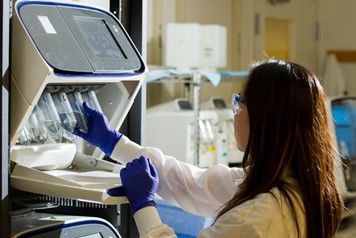In the realm of medical device regulation, Premarket Approval (PMA) represents the most stringent type of device marketing application required by the U.S. Food and Drug Administration (FDA). PMA is mandatory for Class III medical devices, which are typically high-risk devices that support or sustain human life, are implanted, or present a potential unreasonable risk of illness or injury. Patrick Gora of Rochester discusses the PMA process for high-risk medical devices, delving into clinical study requirements, data submission, and the FDA review process.
What is Premarket Approval (PMA)?
Premarket Approval (PMA) is the FDA’s process of scientific and regulatory review to evaluate the safety and effectiveness of Class III medical devices. These devices pose a higher risk to patients and thus require rigorous evaluation before they can be marketed. Unlike the 510(k) process, which is used for lower-risk devices and focuses on substantial equivalence to a predicate device, PMA requires direct evidence of safety and effectiveness.
Clinical Study Requirements
A pivotal component of the PMA process is the clinical study requirement. High-risk medical devices must undergo extensive clinical testing to provide the necessary evidence of safety and effectiveness.
Investigational Device Exemption (IDE): Before conducting clinical studies, manufacturers must obtain an Investigational Device Exemption (IDE) from the FDA. This exemption allows the investigational device to be used in a clinical study to collect safety and effectiveness data. The IDE application must include detailed information about the study protocol, informed consent, and how patient safety will be protected.
Study Design: The clinical study must be well-designed to provide robust data. This typically involves randomized controlled trials (RCTs), which are considered the gold standard in clinical research. The study design should outline the methodology, patient population, endpoints, and statistical analysis plan.
Data Collection and Monitoring: During the clinical study, data collection must be rigorous and systematic. Adverse events, device malfunctions, and patient outcomes need to be meticulously recorded. Regular monitoring and audits ensure the integrity and accuracy of the data.
Ethical Considerations: Ensuring patient safety and ethical conduct during the study is paramount. This includes obtaining informed consent, maintaining patient confidentiality, and adhering to ethical guidelines and regulations.

Data Submission for PMA
Once the clinical study is complete, the manufacturer must compile the data and submit a comprehensive PMA application to the FDA. The application includes several critical components:
Summary of Safety and Effectiveness Data (SSED): This section provides an overview of the clinical data, summarizing how the device meets safety and effectiveness criteria. It includes a detailed analysis of clinical trial results, adverse events, and risk-benefit assessment.
Device Description: A thorough description of the device, including its components, materials, and how it operates. This section should also include detailed manufacturing processes and quality control measures.
Labeling: The proposed labeling for the device, including instructions for use, contraindications, warnings, and any promotional materials. The labeling must accurately reflect the device’s intended use and safety information.
Manufacturing Information: Detailed information about the manufacturing process, including quality assurance procedures, to ensure the device is consistently produced to high standards.
Non-Clinical Laboratory Studies: Data from non-clinical studies, such as bench testing, biocompatibility studies, and software validation, to demonstrate the device’s safety and performance under controlled conditions.
The FDA Review Process
The FDA review process for PMA is thorough and involves multiple stages:
Administrative and Scientific Review: The FDA first conducts an administrative review to ensure the application is complete. This is followed by a scientific review, where experts evaluate the clinical data and other submitted information.
Advisory Panel Review: For many PMA applications, the FDA convenes an advisory panel of independent experts to review the data and provide recommendations. The panel’s advice, while not binding, is highly influential.
Inspections: The FDA may inspect the manufacturing facilities to verify that they comply with Good Manufacturing Practices (GMP) and quality system regulations.
Decision: Based on the review, the FDA will either approve the PMA if the device is deemed safe and effective or issue a “not approvable” letter outlining deficiencies. The manufacturer may address these deficiencies and resubmit the application.
Conclusion
Premarket Approval (PMA) is a rigorous, thorough process designed to ensure that high-risk medical devices are safe and effective for patient use. From obtaining an IDE for clinical studies to navigating the FDA’s comprehensive review process, manufacturers must adhere to strict guidelines and provide robust evidence to gain approval. Understanding and following these requirements not only facilitates compliance but also helps bring innovative, life-saving medical devices to market, ultimately benefiting patients and advancing healthcare.
